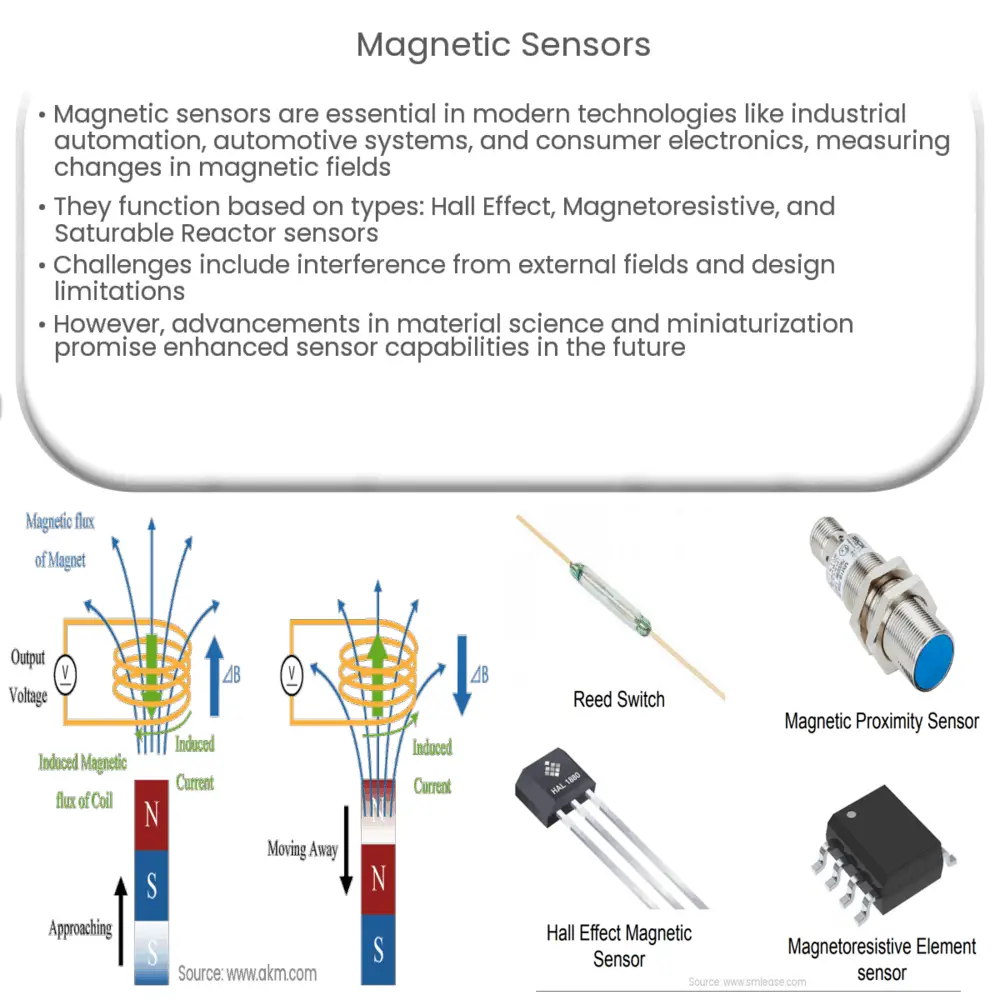Explore the world of magnetic sensors, their types, working principles, applications, challenges, and future perspectives.

Introduction to Magnetic Sensors
Magnetic sensors are vital components in many modern technologies, playing critical roles in various sectors such as industrial automation, automotive systems, and consumer electronics. In essence, they measure magnetic fields or changes in magnetic fields, providing valuable data for numerous applications.
Types of Magnetic Sensors
- Hall Effect Sensors: These devices leverage the Hall Effect, which is the production of a voltage difference across an electrical conductor, transverse to an electric current in the conductor and to an applied magnetic field perpendicular to the current.
- Magnetoresistive Sensors: These sensors work on the principle of magnetoresistance. This phenomenon causes a change in the resistance of a material in response to an applied magnetic field.
- Saturable Reactor or Magnetic Amplifier Sensors: These are based on the magnetic hysteresis characteristics of ferromagnetic materials, specifically their saturation behavior in response to changes in the magnetic field.
Working Principle and Applications
The primary principle behind magnetic sensors is their responsiveness to changes in magnetic fields. When a magnetic object passes by or when a magnetic field changes, these sensors respond by changing their physical properties, which is then converted into an electrical signal. The resultant signal can be analyzed to gather information about the magnetic field or the magnetic object.
Applications of Magnetic Sensors
- Industrial Automation: Magnetic sensors play a crucial role in several automation processes such as positioning, speed detection, and object detection.
- Automotive Systems: In the automotive sector, they are used for applications like anti-lock braking systems (ABS), electric power steering, and engine timing control.
- Consumer Electronics: These sensors find extensive applications in consumer electronics as well, notably in smartphones for compass functions, and in virtual reality or augmented reality systems for position tracking.
Despite the numerous applications of magnetic sensors, the technology behind them is complex, and their performance and capabilities are heavily influenced by various factors. In the subsequent part of this article, we will delve deeper into the operating principles of magnetic sensors, their challenges, and future perspectives.
Operating Principles of Magnetic Sensors
As mentioned, the basic working principle of a magnetic sensor involves the conversion of a magnetic field change into an electrical signal. However, this principle differs slightly depending on the type of sensor. For instance, Hall Effect sensors create a voltage difference when a magnetic field is applied perpendicularly to the current flow, while magnetoresistive sensors alter their resistance value in response to an external magnetic field.
Challenges Faced by Magnetic Sensors
While magnetic sensors are integral to numerous applications, they also face several challenges. These include interference from external magnetic fields and other environmental factors, which can impact the accuracy of measurements. Furthermore, issues like power consumption, size, and cost are other significant considerations in sensor design and utilization.
Future Perspectives
Despite these challenges, the future of magnetic sensors appears promising. Advancements in material science, such as the development of novel magnetoresistive materials, are paving the way for sensors with enhanced sensitivity and reduced power consumption. Furthermore, the ongoing miniaturization trend in electronics is leading to the development of smaller, more efficient sensors that can be integrated into a wide range of devices.
Conclusion
In summary, magnetic sensors are invaluable devices in our technologically-driven world, contributing to various sectors, including industrial automation, automotive systems, and consumer electronics. They operate based on their sensitivity to magnetic field changes, converting these changes into electrical signals for analysis and information gathering.
Despite facing challenges such as external interference and design constraints, ongoing advancements in technology, particularly in material science and miniaturization, are enhancing the capabilities of magnetic sensors. As these improvements continue, we can anticipate a future where these devices become even more integral to our daily lives, offering improved performance, versatility, and efficiency.

